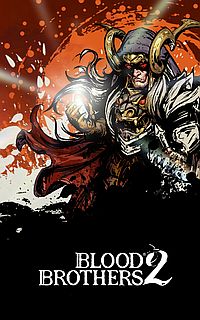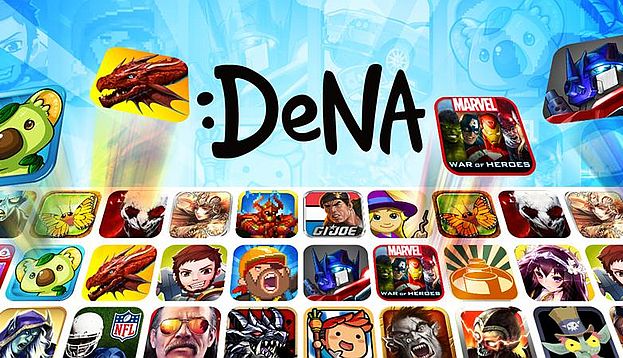Mobile games are a difficult business that’s been changing rapidly for many years now, with rapid hardware evolution, changing business models, new and fast-growing markets appearing, and numerous other changes. So it’s a significant thing indeed when a company has not only survived through many such changes, but thrived in the face of this shifting business. DeNA is one such company, a Japanese mobile game giant established in 1999 that has reached well over $1 billion in annual sales with mobile games first on feature phones, and now on smartphones and tablets.
Keeping a mobile game company at the top ranks of the business for years is a difficult task, especially as the market expands worldwide. DeNA has been successful not only in Japan but in other regions as well, snagging major licenses like Marvel and Transformers. DeNA West is led by CEO Shintaro Asako, who spoke with [a]listdaily about how to succeed in the mobile games business today, and some of the key factors that DeNA looks for in evaluating mobile games.
 Shintaro Asako
Shintaro Asako
It’s so difficult now to get a mobile game to the top ranks of apps, with the huge numbers of games on the market and new ones entering constantly. What are the key factors in making a mobile game successful?
For free-to-play games to be successful, that three important things have to be there. I call them the three mountains. Because it’s free, and so many games are out there, the first mountain is that the game has to be really attractive to make sure that people find this game and think that it might be fun, so that they decide to download it. This has nothing to do with the actual game play — the game has to be really attractive so people find the game and when they see it they say ‘This looks cool, I want to play it.’
The second mountain is the game has to be so easy and fun you come back and play it for maybe two to three days. Once people download the game, they don’t have any instructions or manual, and they don’t have any investment into the game. Therefore you have to make sure the game is very easy to understand and fun to play. Instead of going through detailed long tutorials, the easiest thing to do is let the player play the game right away, and the control has to be intuitive instead of having to be explained in detail. Some piece of interaction has to come in to grab people’s attention and hold it for one day to three days. Anything beyond three days, people usually have to have a different reason to play that game. You can maybe have filet mignon for two days in a row, but you can’t have it for seven days in a row.
The third mountain is that now you are getting into the core of the game. Perhaps, if it’s a racing game, you think “Instead of just racing I need to get a better car. I need better parts, or I probably need to get tuning done.” People start thinking abut how to win this racing game — I need a better team, I need a better car — so people are now getting into a deeper game, the metagame, not just winning a race. That’s the piece that really dictates the super-successful games that have high lifetime values (LTV’s) versus low LTV games that people might decide to play for a few days then move on to another game. All the really successful games today have really long retention. People not only download it because it looks fun, play it because it’s so fun, but people also have a deeper reason why they continue to play that game. The last piece is usually linked to some game mechanic like an RPG. Talking about a racing game, instead of just doing a race, you’re now buying a car, optimizing a car, practicing, tuning up the car — that’s more like an RPG, or team management in a sports game.

What sort of monetization works best for free-to-play games?
When that cycle starts, people have to feel that it’s positive purchases, not negative purchases. Positive purchases means that it’s not that you run out of energy and you have to pay to continue to play the game. For instance, I have a Toyota Camry but I need a Porsche to be able to win my game, so I have to play more and gain more points so I can get a new car. That’s a really positive experience, so users are invested into the game. They are now getting the free game and playing a quick mini-game, and they are getting into a long-term investment phase, a growing aspect of the game, so people will play the game for a long time.
On the top-grossing charts, you can see Clash of Clans where you are buying additional buildings and making your empire strong, that’s really investment. Game of War is the same thing. Those successful games have that RPG aspect. Whether it’s a racing game or a sports game or a tower defense game, people buy additional things and grow it, that’s the really fundamental aspect of those game and it’s the only way you can engage users to play for a long time. But if there’s no fun, crisp minigame, people feel like they’re constantly studying and don’t get to practice with what they have gained in the game. The minigame could be a puzzle, or a race, or a sports game, but usually the successful game has two aspects, the RPG aspect where you do something day to day to improve your character, and there is a place to exercise what you have gained.
What do see in the years ahead for China, Japan, and the West for mobile games? How are those markets alike, and how are they different?
The Japanese market is about a $7 billion market, and I expect that market to grow in single digits over the next couple of years. I predict it will go up a billion dollars or so in the next couple of years; it will grow but not as fast as other markets. The Chinese market today is somewhere around a $4 billion market, and I expect it to go to $8 billion in the next two to three years if not earlier. I expect the Chinese mobile gaming market will be the largest mobile gaming market in the world. The Western market, which is mainly North America and Western Europe, is around $3.5 to $4 billion, maybe slightly smaller than China. I think this market will be $5 to $6 billion in the next few years. This is DeNA’s prediction, and the good thing is that all three markets are huge, and all three are growing. Our strategy is to be successful in all three markets.

The second thing is that all three markets are very distinctive from each other. The type of game, the type of minigame that people like to play, the type of metagame, and the genre of game that people like is all quite different for all three regions. If you look at the top ten-grossing charts, eight to nine out of the top ten games are created by local developers for all three markets. Some people look at Candy Crush and say all you need to do is create the right game and localize it for each market, but that’s not true. You have to really think global but also be local — some people say “glocal.” You have to really understand what attracts each local audience.
What’s the best advice you can give a mobile game developer to help them be successful in 2015?
Unless you have a local team targeting for a local audience, which is China, the West, and Japan, people should seek partnerships to make their game successful globally. If you don’t have people or a studio in other markets, the easy thing to do is either licensing the game to other people with experience in that market or find a partner who wants to work with you to be successful in that market. The second thing is, people are playing successful games for a longer time, even twelve months or longer. A new game that’s slightly better will not necessarily attract people. The quality bar to convince people to switch from an existing game to a new game is higher. It doesn’t mean people aren’t going to try, because it’s easy to check out a game.
People have a invested a long time and a lot of money into an existing game, so for you to convince them to stop playing and shift over to a new game is tough. For anyone to be successful in today’s market, the game has to be really high quality. You probably have to convince Apple and Google to feature your game. You probably need IP to convince people to at least download your game, and your game it has to have that minigame concept and RPG concept to be successful afterward. If someone has an excellent minigame, it’s probably better to have a larger company as a partner so the larger company can either guide the company to create that RPG element or perhaps get something like the Star Wars IP and attach that to the game. The market getting more difficult for small to medium size companies. People are already playing an existing game… you’ve already seen this happening in the console market. It is happening in the mobile gaming market. It’s not any more some guy in a garage making a minigame and making millions of dollars.

